If you have ever bought or received something rare, precious, or expensive, it would have been accompanied by free advice about safeguarding it. The same applies to human resources. Recruiters put in a lot of effort, time, and investment in hiring the right talent for their organization. It is just as wise for them to take care of their hires.
Human Resources has evolved a great deal – in terminology and also in approach. The change in terminology reflects the change in the depth of the activity. For example, hiring became a talent acquisition. The result of both activities is the same: getting a person to do a job. However, many other factors are considered in talent acquisition, such as employee motivators, cultural fit, etc.
When an employee is hired, considering so many factors, keeping in mind a long-term professional relationship, hiring transforms into talent management.
Long story short, these terms indicate the approach of hiring a candidate into the organization.
Let’s understand 3 of these significant terms in recruitment – Talent Acquisition, Talent Management, and Human Resources.
As you can see from the above image, Human Resources is an umbrella term that involves activities right from sourcing talent to employee offboarding. You can view Human Resources as an end-to-end process. However, usage of the term Human Resources is associated more with talent management and includes many other activities like:
- Creation of Job roles and descriptions
- Creation of employee compensation packages and benefits
- Creation of human resource and performance policies
- Design career paths
- Creation of a rewards and recognition system
- Recruitment
- Learning and development
- Employee satisfaction and retention
Let us understand the differences in the roles of the two departments in Human Resource Management- Talent acquisition and Talent management.
What is Talent Acquisition?
Talent acquisition is finding candidates with the ‘right’ (for the role and organization) set of skills, competencies, and attributes. It encompasses the planning and forecasting of hiring needs, attracting talent, and conducting interviews to recruit suitable candidates. Building a strong employer brand image, engaging with a potential talent pool, and creating a hiring pipeline are some other responsibilities of talent acquisition. As mentioned earlier, talent acquisition is a continuous and long-term process.
What is Talent Management?
Talent management is retaining candidates who have been hired. It includes many aspects, such as employee development, engagement, and performance management. Talent management also involves learning and development, as well as rewards and recognition. Often, talent acquisition is also considered a part of talent management.
How is Talent Acquisition important?
Talent acquisition is significant and can be extremely beneficial in managing your organization’s bottom and top lines. If there is enough clarity about the vision, roles, and goals, the process of talent acquisition can make your organization quite successful. Since it is a conscious process (considering a lot of hiring factors are within your control), you can include as many steps as you want to get the most suitable talent pool for your company. Such a process has the following benefits:
- It helps build the competence of the workforce
- It creates a competitive advantage
- It helps save time and money (and effort)
- It helps build a good brand image
- It helps the company prepare for future goals and expansion
- It promotes diversity and inclusion
How is Talent Management important?
It is necessary to safeguard valuable resources that have been hired into the organization. If the hired candidate has the experience, skills, and expertise for a particular role, their contribution and knowledge become more precious. The Panopto Workplace Knowledge and Productivity Report found that 42% of valuable company knowledge is unique to an individual employee.
Thus, if such an employee leaves the organization, 42% of their work is not covered and will have to be learned from scratch by someone new.
Talent management has several other benefits:
- It helps build and maintain employee morale, which in turn, affects productivity, retention, and skill quotient.
- It builds a good brand image as an employer.
- It helps maintain a healthy organizational culture.
- It improves employee loyalty and, therefore, the reliability of the organization on its workforce.
- It also helps create a talent pipeline and facilitates succession planning
- It helps in strategic hiring, thus affecting bottom-line costs.
What does the Talent Acquisition team do?
The talent acquisition team is responsible for the following activities:
- Creating a good brand image (also as an employer)
- Sourcing candidates and generating leads for potential candidates
- Interviewing and assessing the candidates
- Conducting reference checks
- Hiring and onboarding
What does the Talent Management team do?
The talent management team usually steps in or takes over after an employee has been successfully onboarded. However, these processes overlap in many organizations. The major role of the talent management team is:
- Ensuring that the basic work factors (workplace hygiene, safety, compensation, etc.) provided to employees are satisfactory
- Maintaining a good performance management system
- Recognizing and rewarding good performance
- Ensuring consistent employee engagement to check morale and satisfaction
- Developing skills and providing growth opportunities within the organization
Strategy for Talent Acquisition
Some aspects that are considered in creating a talent acquisition strategy:
- Forecast future hiring as per the organization’s goals
- Build a talent pipeline
- Build a strong brand image
- Create an objective and efficient assessment process
- Use of technology and social media to ease sourcing and assessment
Read – Best Talent Acquisition Practices
Strategy for Talent Management
Strategic talent management includes:
- Invest in employee development
- Standardize important processes like onboarding, performance management, rewards, recognition, etc.
- Create unique ways for employee engagement and motivation
- Realign your Employee Value Proposition regularly
- Create and maintain good organizational culture and employee well-being
- Align organizational goals and employee aspirations
What is the difference between Talent Management and Human Resource Management?
Talent Management is a part of Human Resource Management (HRM). HRM is an end-to-end process that includes planning and strategizing hiring and workforce management, creating policies, and formulating processes and procedures to achieve organizational goals.
Talent Management is a subset of HRM that focuses on managing performance, developing employees, and ensuring employee satisfaction and hence retention.
What is the difference between Talent Acquisition and Recruiting?
Talent Acquisition and Recruiting focus on hiring the right candidate for a particular role. The difference in both roles is the approach and the depth of activity. Recruiting is to find, assess, interview, and hire a candidate with a certain skill set to fill a role.
Talent Acquisition takes this one step ahead and looks at the mutual benefits for the candidate and the organization and how a long-term association can be forged. It also ensures that hiring a candidate adds value not only to the company’s productivity but also to its culture and brand image.
What is the difference between Talent Acquisition and Talent Management?
Talent management is the stage after talent acquisition. Acquiring talent is about getting the right skills and attributes for the role and the company.
Managing talent is about training, developing, rewarding, and motivating employees to maintain an engaged, satisfied, and reliable workforce.
What’s more important: Talent Management or Talent Acquisition?
Both these processes have their unique role and importance for the organization’s success. Neither is comparable to the other. If you hire good resources, it is necessary to safeguard them and retain them.
If you hire good talent and don’t invest in their growth and well-being, the costs (rather losses) are beyond the financial investments. Both these processes have to be effective to achieve the desired productivity and success benchmarks.
Wrap Up
All of these processes in Human Resource Management have come into existence for specific reasons. Earlier, hiring would be dependent on vacancies, and people would have to acquire skills to fit into the available roles. Hiring later became skill-based and continues to remain so. However, the working relationship became mutually beneficial between the employees and employers.
Talent acquisition and management are strategic and focus on how companies and employees can help each other develop and succeed. Apart from hard work, effective talent acquisition and management are a sure-shot formula for success!
FAQs on Talent Acquisition, Talent Management and HR
What term should an organization use for hiring candidates?
You can call your hiring team Human Resources, Recruitment, or Talent Acquisition based on your objective and approach in hiring your workforce. You can have smaller teams designated as Talent Acquisition and Talent Management within the Human Resources Department.
What role does technology play in Talent Acquisition and Management?
Technology can make your talent acquisition and management processes smoother, time-saving, and cost-effective (in the long run). It can help you in sourcing, screening, and assessing candidates objectively and make data-driven hiring decisions.



